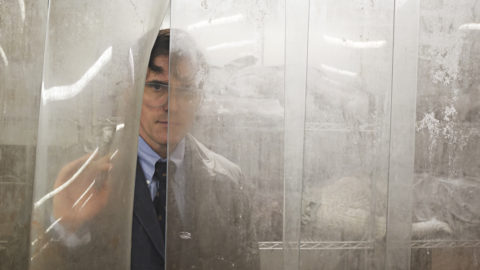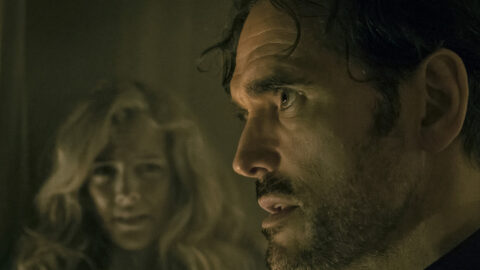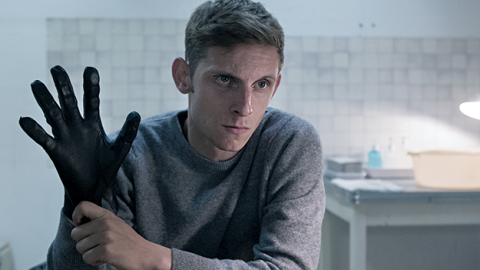Interview: Manuel Alberto Claro
This interview is part of a series with influential cinematographers who attended the 2018 EnergaCAMERIMAGE International Film Festival in Bydgoszcz, Poland.
When the Chilean-born Danish cinematographer Manuel Alberto Claro teamed up with Lars von Trier for Melancholia (2011), he not only shouldered the responsibility of delivering a sublime vision of the Apocalypse, but also of becoming a driving force in the expansion of an oeuvre whose existential depth and formal risk-taking never cease to propel cinema toward new configurations of modernity. Pushing boundaries on both technical and narrative levels, von Trier’s latest films shot by Claro—Melancholia, Nymphomaniac (2013), and The House That Jack Built (2018)—present an exhilarating combination of naturalism with excursions into alternative realms of reality and experience. A staggering demonstration of Claro’s flexibility and craftsmanship, The House That Jack Built is located at the intersection of Nymphomaniac and Melancholia through its playfully self-reflexive portrait of a nihilistic serial killer embodied by Matt Dillon.
I caught up with Claro at EnergaCAMERIMAGE, where he was a jury member for the Music Videos Competition alongside Oliver Stapleton and Ed Lachman.
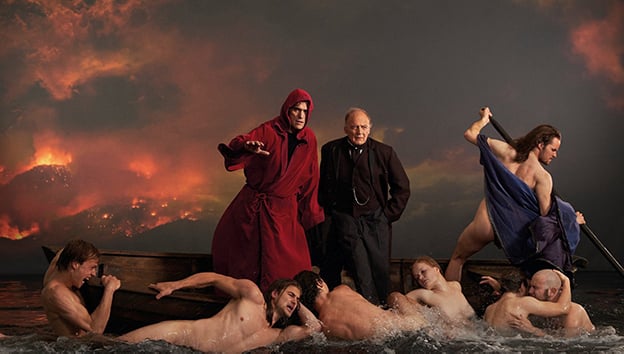
The House That Jack Built (2018)
From a formal and structural standpoint, The House That Jack Built is a sister film to Nymphomaniac. But whereas Nymphomaniac was rooted in the pain and guilt of addictive self-destruction, The House That Jack Built is more detached and cerebral, conveying the unrelenting and mathematical nature of Jack’s murderous obsession. Can you reflect on the relationship between the two films and how you set about penetrating their protagonists’ irreverent psyches?
In the case of The House That Jack Built, the sense of detachment comes from the construction of the script itself. The fact that you don’t see who Jack is talking to impacts your viewing experience by making his words feel detached. In Nymphomaniac, you have a very physical setup in which you understand why these two people [Charlotte Gainsbourg’s Joe and Stellan Skarsgård’s Seligman] meet, whereas in The House That Jack Built, there is no real introduction until the very end. The locations in The House That Jack Built are more clinical, with very few people, and landscapes play some role, while in Nymphomaniac, the action takes place in small rooms and is much more claustrophobic. Apart from that, it also seemed to me that connecting emotionally with a sociopathic serial killer was rather more tricky than connecting with an intelligent nymphomaniac. [Laughs]
One major difference between The House That Jack Built and the “Depression trilogy” [comprised of Antichrist, Melancholia, and Nymphomaniac] is the absence of an autonomous, stylized opening sequence. There is a sense of raw casualness about being immediately catapulted into the action, a sense that unlike Melancholia, this isn’t a film that is ultimately designed to be taken too seriously…
That’s an interesting point… I remember saying to Lars that we could start [The House That Jack Built] with a helicopter shot of the car driving through the forest or something more dramatic. But he was very clear about wanting to start immediately: there’s a black screen, you hear two people talk, and you cut straight into the scene. He was not interested in doing anything that came close to a statement. It’s like that with Lars: you don’t question his ideas and approach. You may not understand them at the onset, because nothing you’ve learned in film school really applies to them, but you always end up being surprised at how well they work and how powerful they are. Lars is someone who talks about whatever he feels like, whenever he feels like it; he can meander into subjects that seem completely unrelated and doesn’t have to fit them into a plot or anything. It’s what he calls “cinematic digressions.”
How did von Trier introduce his intentions with The House That Jack Built?
I think one of his main challenges was getting the viewer on board for the whole film despite how big of an asshole the character is. So he was kind of testing this tension. But it’s also a very new thing for Lars to have a male protagonist. He always writes about himself, but at some point, he detaches from the character by changing the sex or whatever. He didn’t do that on this film, so he was somehow closer to himself, which was a challenge and a way of trying out something new. You know, Lars is very interested in evil and that side of human nature. And he is also at a point in his life where he seriously feels like every new film he makes could be his last one. So he tries to empty out all his thoughts and obsessions. In my opinion, he has created a new kind of genre with this way of talking about whatever you want, whenever you want. It has roots in literature of course, but I don’t remember seeing anything like that in cinema.
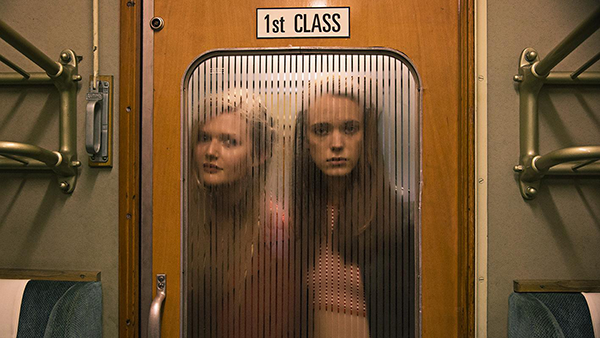
Nymphomaniac (2013)
How did you and von Trier tackle the visual progression of Jack’s murders? Was it a similar process to when you were stylistically setting apart Joe’s stories in Nymphomaniac?
We had very strict rules for each chapter of Nymphomaniac, while The House That Jack Built was a more fluid process. We had ideas for the look of the scenes and not so much for the way of shooting them, which was different from Nymphomaniac, where we had definite rules about the camerawork. Since Nymphomaniac was such a long movie, we wanted to separate and define the different stories clearly. For instance, we had a black-and-white sequence, one in which the camera was completely still, as well as another one in a different aspect ratio than the rest.
As Jack’s OCD cools down, the film’s aesthetic becomes more unabashed and adventurous, with a proliferation of archival and mixed media sequences. Was all this material clearly outlined in the script or did you also participate in its selection and elaboration?
No, I didn’t. Everything was in the script, and even though we didn’t have all the archival material before the shoot, we knew exactly when we would be cutting to it. Some, like the Glenn Gould footage, were selected specifically.
Is it fair to say that moving across such a wide range of aesthetics within a single film was a technical nightmare as much as a creative blessing?
It was probably a technical nightmare for the people in post-production who needed to make sense of it all afterward. For me, it was truly a creative freedom. In film school, you’re very much taught that you need to decide on a certain aesthetic and stick to it. But Lars shows that there’s an alternative, a quality to being eclectic. Sometimes I call this “free jazz,” because it makes for a dynamic energy that is both surprising and interesting. People think Melancholia is a beautiful film, but I think it’s beautiful now and then. [Laughs] It’s not beautiful in general, only in certain sequences, but that’s enough to make it feel like a beautiful film. Lars is quite conscious of this and he really likes to [contrast] these very cinematic, epic shots with something really trashy, which I find super interesting. In my opinion, he is totally ahead of his time; even I don’t get it. [Laughs] I just look at it and say: “Wow, this is crazy.” I have so much faith in him and really believe he’s a genius. When he says something, I ask him twice, like: “Are you sure you want to cut to this crappy GoPro material [in the finale of The House That Jack Built]?” And he replies: “Yeah, that’s what I want to do.” So I say: “Okay, fine.”
In Melancholia, there’s a scene in which the characters set up balloons, then Kirsten Dunst looks into a telescope and we cut to this image that I call a “screensaver.” It’s something Lars found on the Internet, a beautiful still photo of stars. But it’s a screensaver you would put on your computer. And Lars zooms a little bit onto this screensaver and I’m like: “You’re a genius. Nobody would do that.” He has no problem going from something completely over-the-top and beautifully crafted, to something super simple and straightforward. And for the GoPro sequence in The House That Jack Built, he was watching videos of cave divers on YouTube and really felt the claustrophobia of it. That’s why he said: “We need to do this sequence with a GoPro.” So we built these caves in a pool, shot the scene with a GoPro, and then mixed it with some real material from YouTube.
What were your visual inspirations for the final section in hell aside from William Blake’s illustrations to Dante’s Divine Comedy?
Lars brought up different references for each sequence in hell. There’s the Delacroix painting, The Barque of Dante, but also this wall where you see bodies moving, which was inspired by a famous sculpture in a park of Oslo. We did very detailed storyboards for that whole section, with a storyboard artist who’s worked on many of Lars’s films and the VFX supervisor, so we knew precisely what we were after. Then it was about finding locations that would match the script’s needs, and if that wasn’t possible, the VFX supervisor would stitch stuff together. A big part of the ending was built, such as the bridge, and they did CGI around it. In the sequence where [Jack and Verge] walk on a stream and come upon this valley with a water mill, the stream was built and the water mill was a real one, but the whole valley was CGI, made by an amazing French company called BUF. There’s a Lord of the Rings feel to that shot, but I don’t remember seeing other films where you are literally in hell.
Actually, I recently rewatched Woody Allen’s Deconstructing Harry, and his take on the set design when the protagonist journeys to hell is amusingly reminiscent of von Trier’s.
I know Lars really likes Woody Allen, but we never talked about that film. I’ll be sure to take a look at it.
What about the reenactment of Delacroix’s The Barque of Dante?
It was surprising to see the painting come to life so vividly in front of us. We shot that scene in a swimming pool with a huge setup. We had all these extras in the water and needed really powerful waves and wind, a whole mechanism to create the feeling of a moving boat. But because it’s 1000 frames per second, you don’t notice how much craziness it actually involved. Often when you do these very elaborate and specific setups, it becomes a VFX job. But this one turned out organically: it’s all in camera. There might be a bit of fine-tuning, but there’s no more VFX than what is normally done for any shot.
In terms of execution, how would you compare the tableaux images of hell in The House That Jack Built with the apocalyptic high-speed shots in Melancholia?
I certainly drew from my experience on Melancholia for The House That Jack Built, and the Delacroix felt very much like a shot from that film. When we did Melancholia, it seemed to me that we were onto something that we could have taken much further by exploring more this connection between cinema and painting. But after we finished that film, Lars was like, “Okay, that’s done. We don’t want to touch that kind of imagery anymore,” because he had done it on Antichrist, too. So when we made Nymphomaniac, he didn’t want a single slow-motion shot in there. But he kind of returned to that aesthetic later on and decided to mix it into The House That Jack Built.
Why?
Maybe he felt that Nymphomaniac was too ugly or not cinematic enough. [Laughs] It was a long film that we shot relatively quickly, so we didn’t have much time to go deeper into the form. But for me, there are still cinematic things in it, and I find the ending with the tree on top of the mountain quite spectacular. After Melancholia, Lars said: “Oh, it’s a terrible film, so corny and disgusting. I’m throwing up.” In Denmark, we say: “Cheese with cheese on top.” So he imagined Nymphomaniac as a very punk film that went back to the feeling of freedom he had in film school with this kind of “fuck you” energy. But after that, he was like: “Shit. I don’t like these locations.” That’s why he wanted The House That Jack Built to be more aesthetic and beautiful, with the choice of locations playing a huge part in it. And I haven’t heard him trash that film yet. [Laughter]
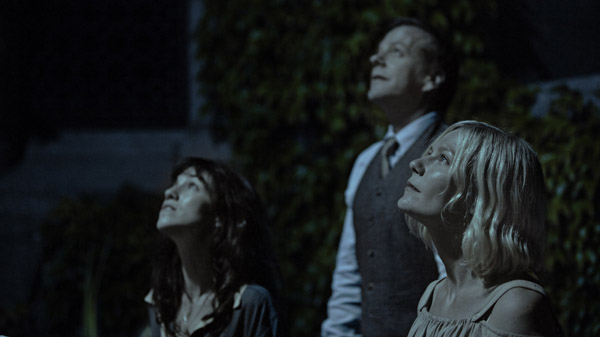
Melancholia (2011)
When you came on board for Melancholia, was it difficult to take over the seeds of the trilogy’s aesthetic from Antichrist’s cinematographer, Anthony Dod Mantle?
I think Lars has a very strong language, and I was a big fan of his work, so I already felt like I knew what he liked. But it’s true that it was a bit tricky in the beginning. For instance, the first week [of Melancholia’s shoot], he was complaining about my operating; he felt that it was too “Hollywood,” not chaotic enough for him. [Laughs] He would say: “I can see that you know the script and are getting ready to pan to the next line or have an idea of what reactions might be interesting.” He wanted it to be completely intuitive and in the moment, and for me to be a character who experienced what was going on for the first time. So during that initial week, he would spot my [mistakes] right away and let me know it was shitty. [Laughter] Lars wants the camera to be completely free, not staged and cerebral, and once you give into that, it’s really easy, and beautiful, and fun to work with him.
How did your collaboration with von Trier come about in the first place? Had he seen your previous films and wanted to work with you?
No. Hoyte van Hoytema was initially attached to Melancholia, but left the project about two months before production. So Lars was looking for a new DP and holding interviews. Zentropa, his production company, which I was familiar with, sent me the script. I read it, then had a meeting with Lars, and he hired me. He said he hadn’t seen any of my work before, and from what I understand, he looked at it only after the interview. So I guess we connected on a personal level and based our collaboration on trust.
Yonca Talu is a filmmaker living in Paris. She grew up in Istanbul and graduated from NYU Tisch.



